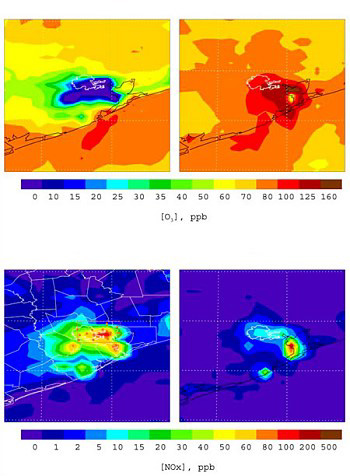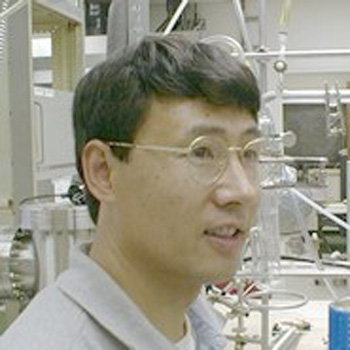Cutting emissions from petrochemical complexes and coal-fired plants may be the best way to reduce polluting ground-level ozone. At least, that is the case for Houston, Texas, one of the most polluted cities in the USA.
Sunlight catalyzes urban ozone formation from volatile organic compounds and nitrogen oxides emitted from cars, petrochemical refineries, and coal-fired power stations. Houston suffers some of the worst ozone levels in the US partly blamed on its large population, it is the fourth most populous city in the country, but perhaps more significant are its surrounding industries. Houston, after all carries out almost half of the nation’s petroleum refining.

Ozone levels (Credit: PNAS)
Renyi Zhang and his colleagues are experts in using state-of-art laboratory instrumentation to investigate the processes involved in hydrocarbon oxidation reactions initiated by OH and other radical species. Chemical ionization mass spectrometry (CIMS) and in situ Fourier Transform Infrared Spectroscopy (FTIR) provide them with the raw data which they then feed to high-level ab initio molecular orbital calculations to provide a supercomputer model of the structures and energetics of the organic radicals. Our objectives are to quantitatively understand the photochemical oxidation mechanisms of atmospheric volatile organic compounds (VOCs) and their role in tropospheric ozone formation, Zhang explains.
They have now used a computer model to simulate how surface ozone levels changed with time and distance during a period of stagnant air in Houston in September, 1993. During the daytime, ozone levels significantly exceeded Federal air-quality standards; the highest ozone levels occurred around the city’s Southeastern petrochemical complexes. At night, continuous industrial nitrous oxide emissions removed almost all of the ozone from the atmosphere, forming an urban ozone hole.

Renyi Zhang
Zhang’s results provide the link between industrial emissions and the rapid production of and strong diurnal variations in ozone levels. He and his team suggest that limiting industrial emissions of organic compounds and nitrogen oxides is absolutely necessary to address the problem of ozone pollution.
Further reading
Proc Natl Acad Sci USA, 2004, 101, 6346-6350
http://dx.doi.org/10.1073/pnas.0401484101
Renyi Zhang
http://atmo.tamu.edu/profile/RZhang
Suggested searches
ozone